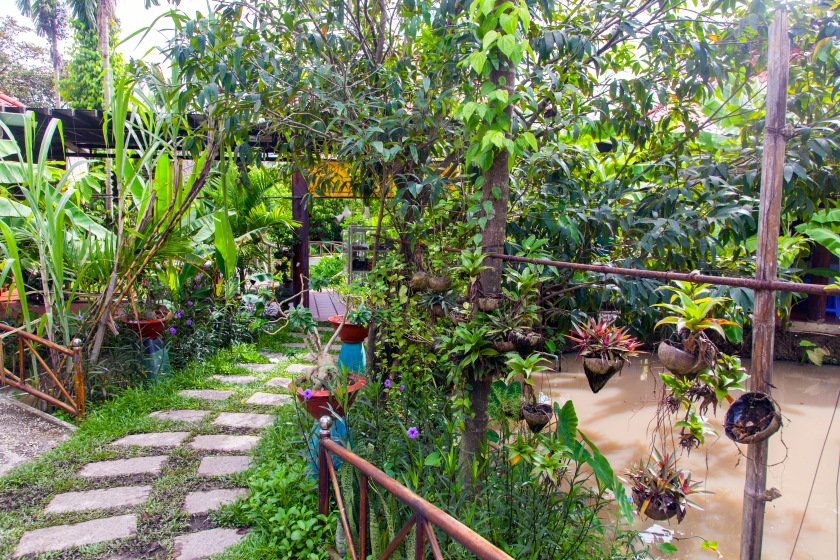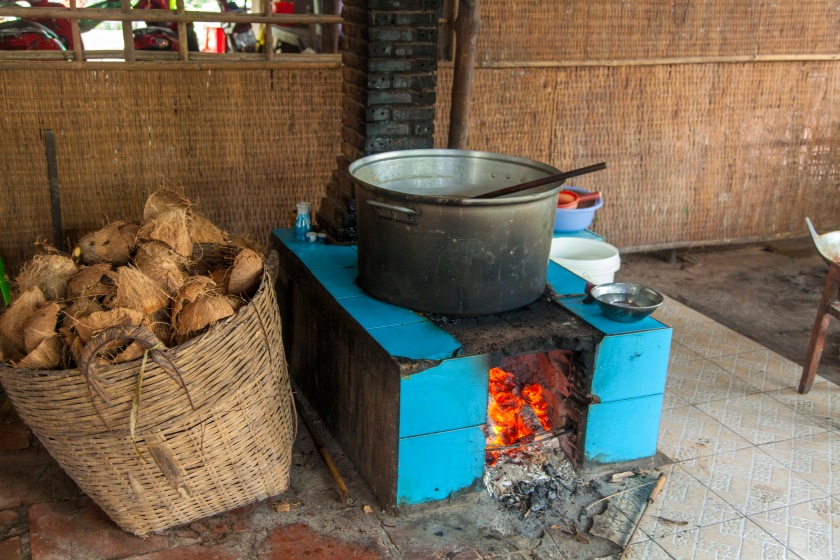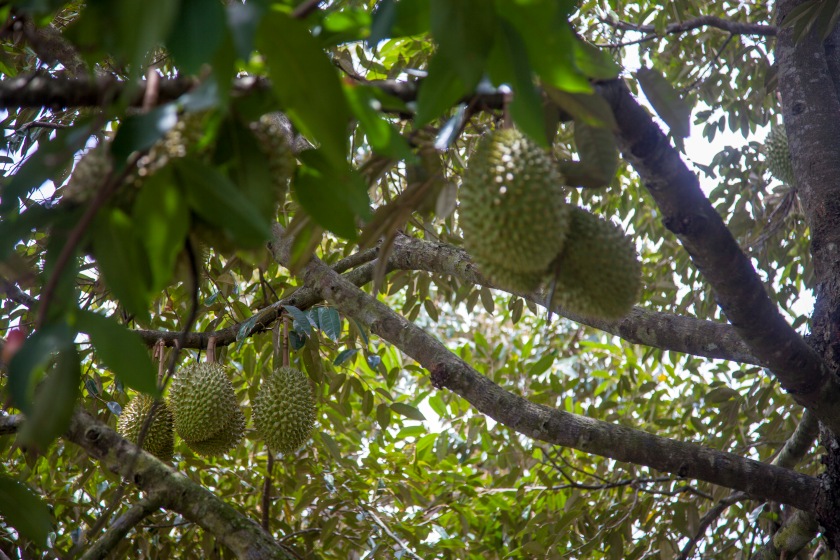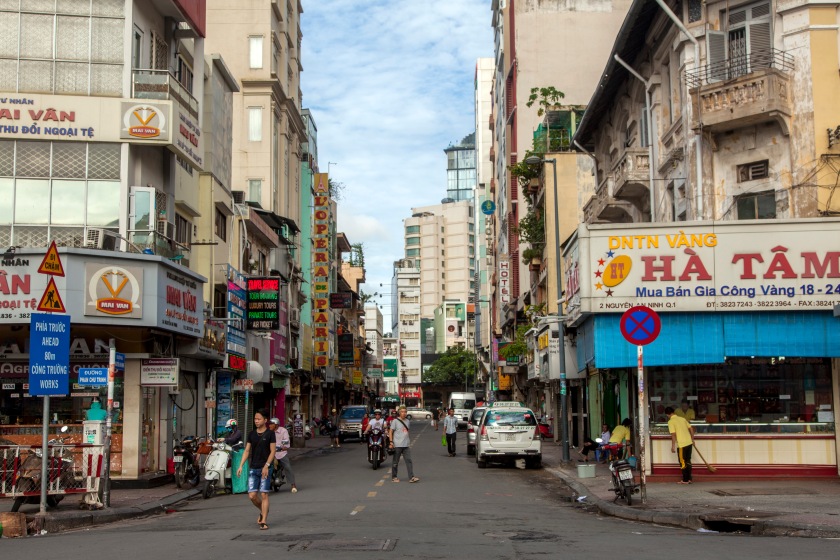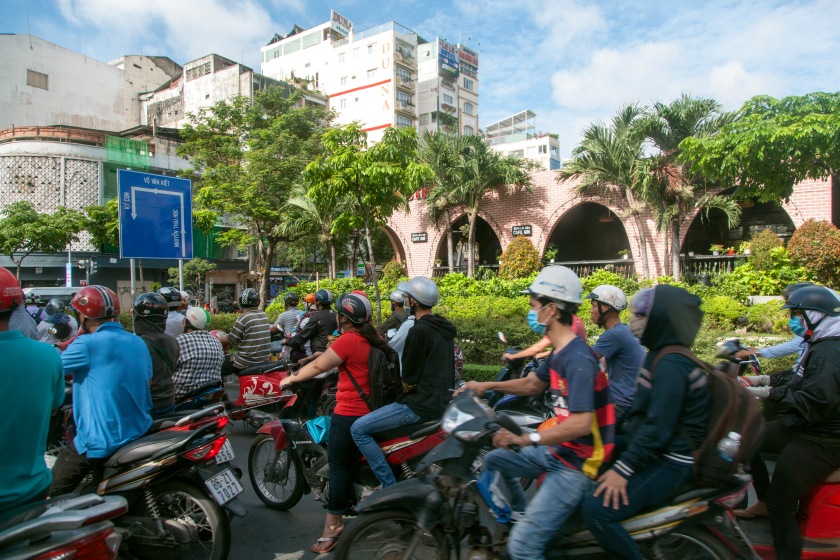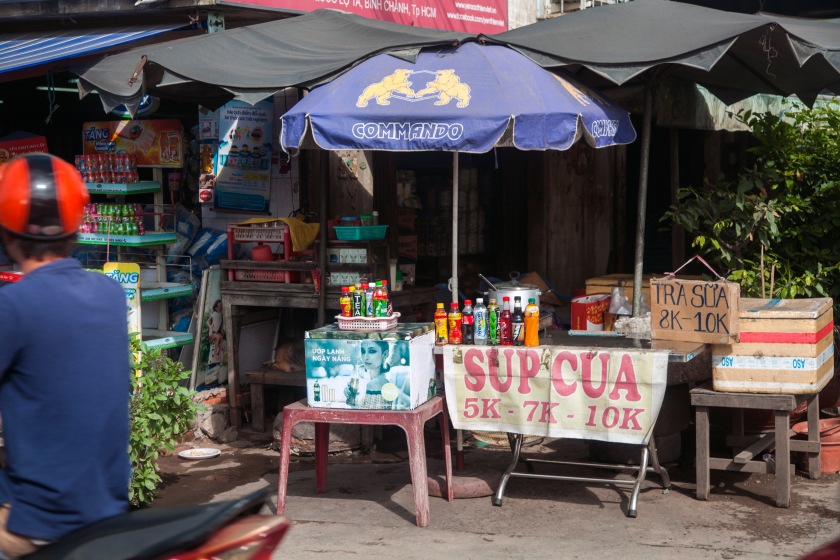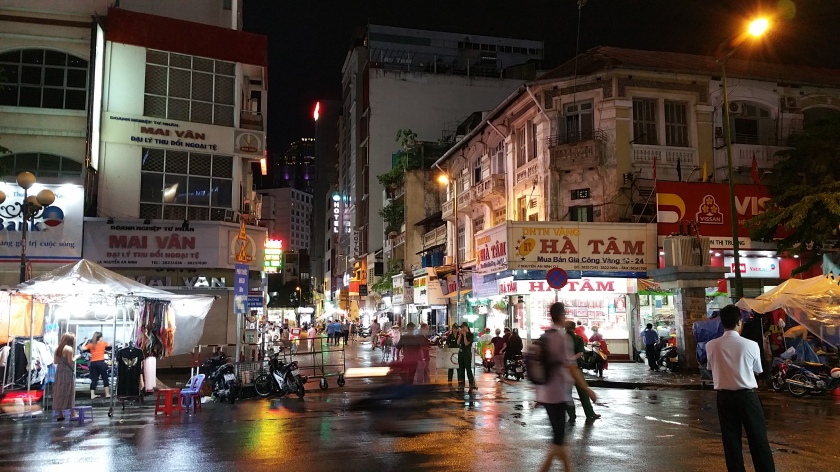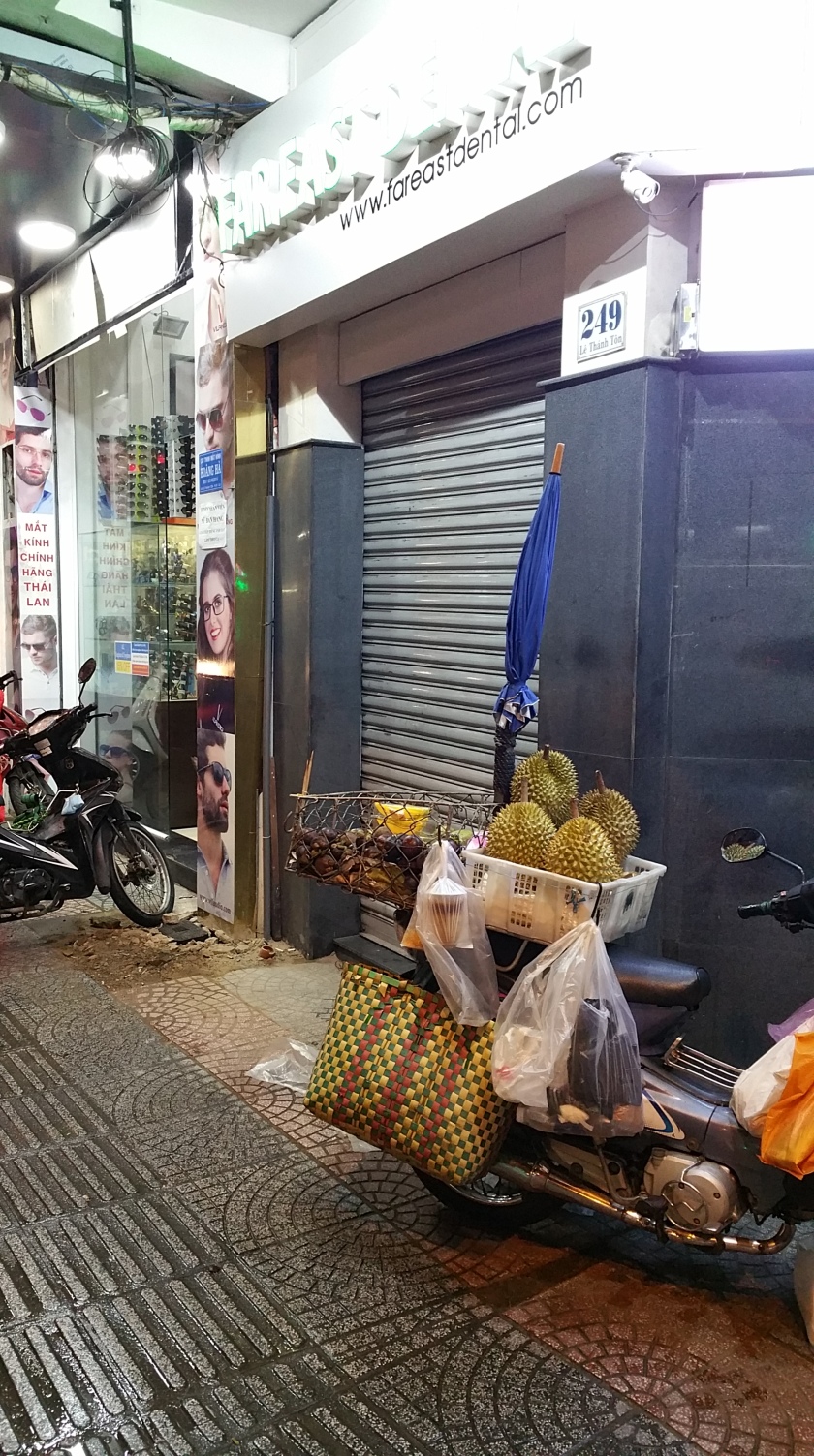РУССКОЯЗЫЧНАЯ ВЕРСИЯ ПО ЭТОЙ ССЫЛКЕ. CLICK HERE FOR RUSSIAN VERSION.
7 June 2017
Today’s Ho Chi Minh City tour was supposed to happen yesterday, but as the presidential Reunification Palace, which was one of the items on our list, was closed yesterday for a government event, the travel agency had to slightly amend our schedule.

It was actually at this palace that our tour began this morning. Before the war there was the South Vietnamese Independence Palace here, however, it was a different building, a 19th-century one in the French colonial style. During the war, that one was bombed, so a new, more modern palace was built in its place later, becoming a symbol of the unified Vietnam.
Generally, there was a lot of history today and in the first half of the day it was mainly contemporary history. So, standing next to this tank, which is a replica of the exact North Vietnamese tanks that rammed the Palace gate in 1975 and actually marked the end of the Vietnam war and the victory of the North, Phuoc gave us a brief overview of Vietnamese history since the First Indochina War against the French colonialists, which began in 1946, followed by the Second Indochina War, also known as the Vietnam War of 1955-1975.

The palace itself has maybe a few dozens of rooms and halls, but only three are currently used for government events. Some of the rest are only demonstrated as a museum, and I don’t even know what they do with the others. The basement, for example, used to be a bunker, and is now closed for reconstruction.




Next, we stopped at the Notre-Dame Cathedral Basilica of Saigon , built by the French, obviously, and also located directly opposite the Post Office building, which is another place of interest. There isn’t particularly much to tell about either, especially that we didn’t spend a lot of time there, just walked in, looked around and left.


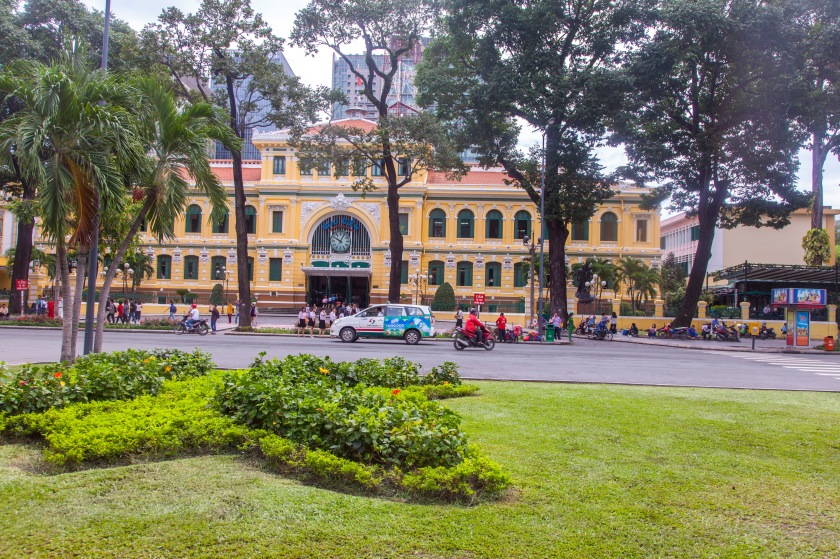
What followed next felt kind of like bitter medicine – unpalatable but useful. It was the War Remnants Museum, which, by the way, before the restoration of diplomatic relations with the USA used to be called Exhibition House for US Crimes. It’s a rather eerie place exhibiting military equipment, war photos (including those of the Songmi massacre and the victims of napalm and white phosphorus bombs), a guillotine, the replica of a South Vietnamese jail for political prisoners, and – most horrible of all! – photographs of victims of Agent Orange (a toxic chemical, repeatedly spread by Americans in Vietnam) with birth defects and mutations. And not only local people had children born with defects, so did also American soldiers after returning home. In Vietnam, there are still a lot of disabled people who are victims of those chemical attacks: we saw some of them both at the Notre Dame Cathedral, asking for alms, and at the museum itself, producing various crafts for sale – unfortunately, the state doesn’t have enough money to support them, so they have to find means to survive on their own.
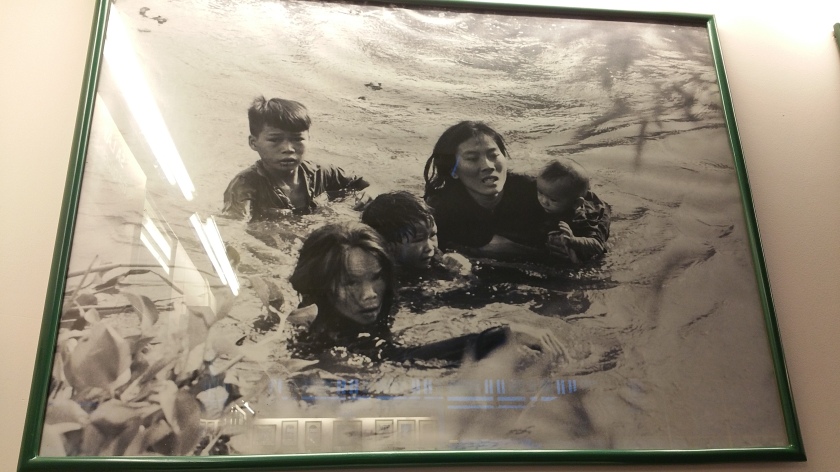


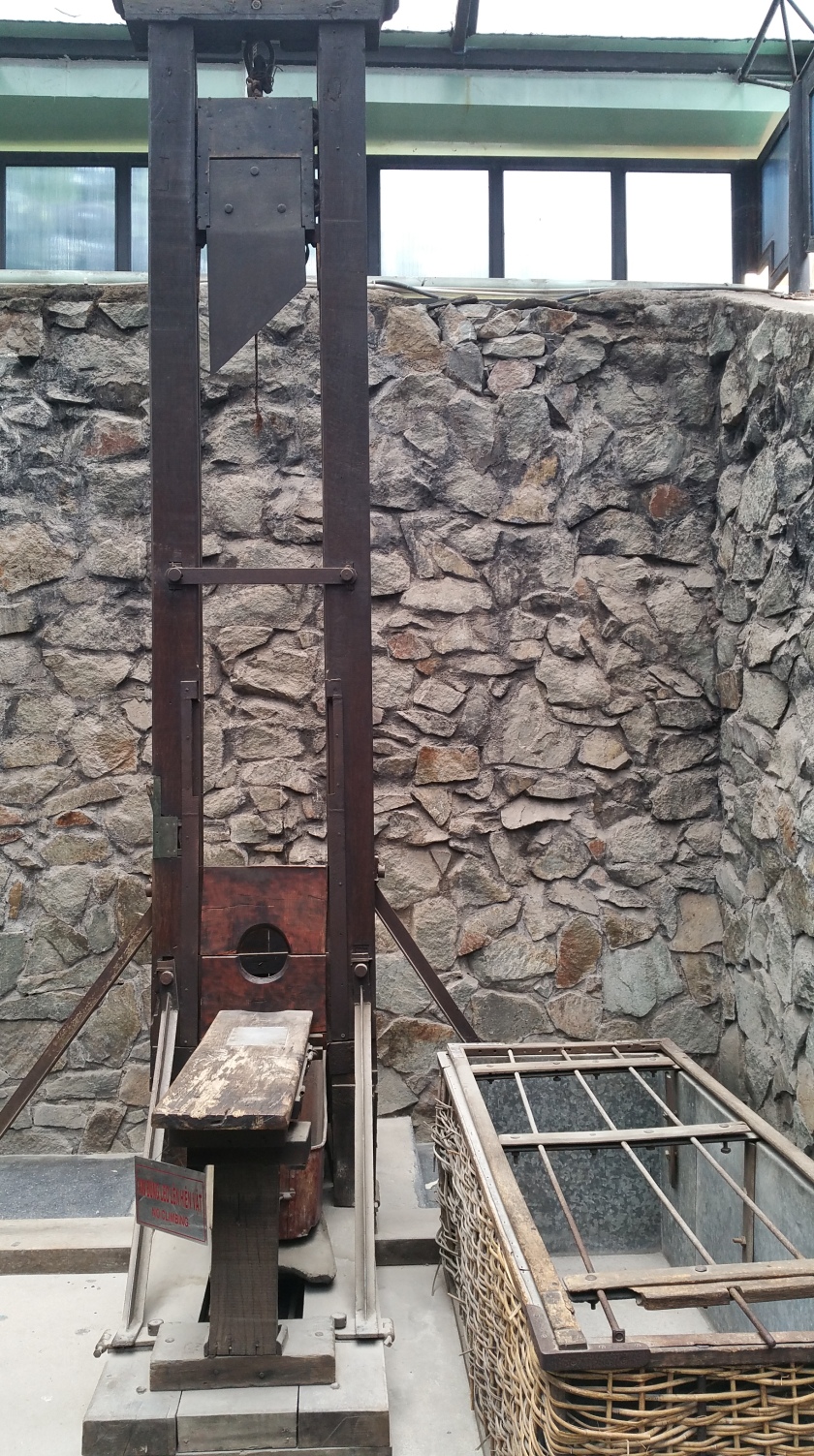
It was all very sad and made me think a lot – mostly about the fact that history doesn’t teach people anything at all, especially in the light of the most recent political events in the world… Now of course, the inscriptions under the exhibits in the War Remnants Museum are characterised by political propaganda, in particular, the northerners are only mentioned as “patriot soldiers” and the South Vietnamese government is called a puppet. We so didn’t expect such evaluative language in the seemingly narrative description of military events, that when we saw a table listing the number of troops from various states, among which the South Vietnamese Puppet was mentioned, we asked ourselves whether the word ‘puppet’ actually meant something different in military jargon, because we simply couldn’t believe that it was meant in its most direct sense.

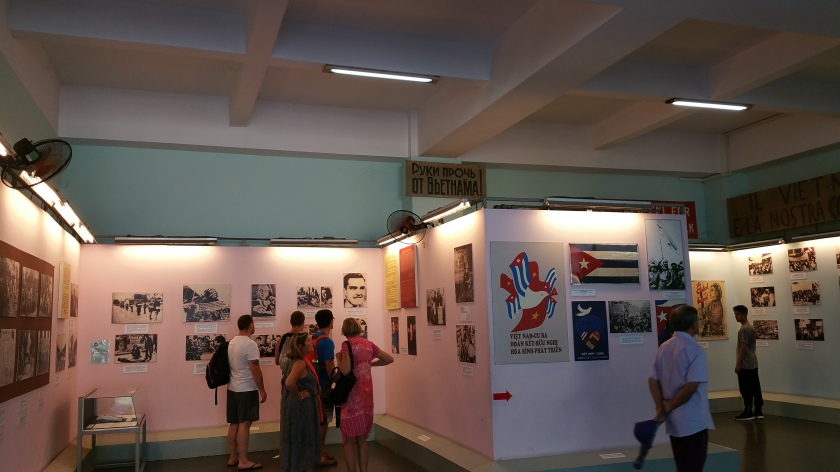
We decided to grab food in a coffee shop right at the museum, and had banh mi –
traditional Vietnamese baguettes (French heritage, as I mentioned before) with chicken, tasting like ordinary doner kebab .
After contemporary history we plunged into more ancient one, also much more positive and entertaining: we went to the privately-owned FITO Museum of traditional Vietnamese medicine. The interior was very interesting, in the traditional Vietnamese style of the 19th century, although the building itself is new.


We got to see an introductory video and then a nice lady showed us the exhibits – there was a huge number of antique dishes, medicinal substances (herbs, minerals, mushrooms etc.), tables listing medicinal plants, half-decayed medical treatises by ancient doctors, written in Chinese characters, etc. We were offered to try on traditional clothes of Vietnamese doctors and pose for a photo behind a pharmacy counter. And also, some of the medicines are mentioned in connection with the emperor Minh Mang, although I can’t remember whether he made them himself or had them invented specially for him. But what’s noteworthy is that the emperor had 500 wives and could visit 5 of them in one night!

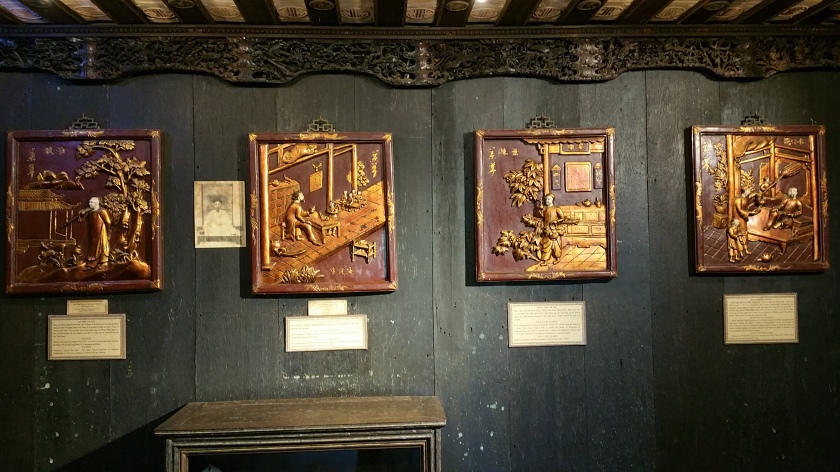
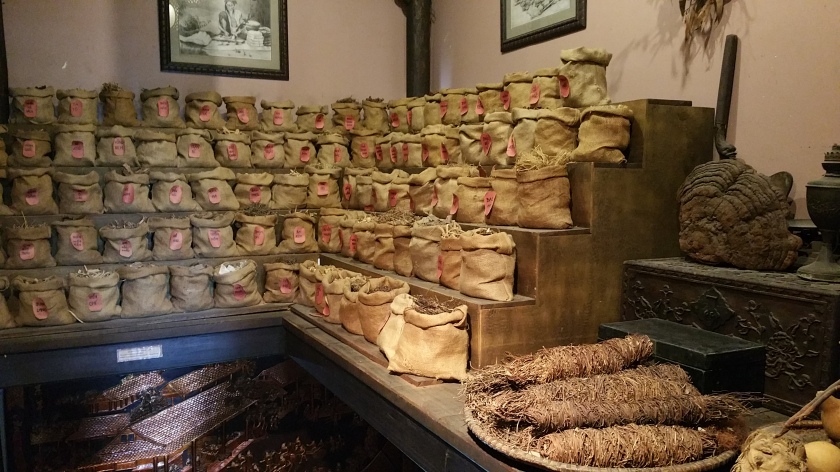

By the way, I didn’t mention Chinese characters just randomly. In fact they were used in Vietnam up until early 20th century, when the French colonial government imposed a switch to a romanised alphabet. In this alphabet, the standard five vowels (or six, if “y” is also considered as one) come with all sorts of diacritical marks: not only are there twelve vowels in Vietnamese, but each one can also be pronounced with six different tones, changing the meaning of the word.
Phuoc tells us all this in the car on the way to the local Chinatown. There are about a million Chinese in Vietnam, many of which don’t even speak Chinese anymore. In Ho Chi Minh City they mainly own wholesale stores. In Chinatown we visited the Thien Hau temple of the Chinese sea goddess. By the way, I’ve already been to another temple dedicated to her in Hong Kong. Among other information about Chinese traditional beliefs, Phuoc told us about the 12-year cycle of the Eastern calendar – in particular that previously before a wedding the bride’s and groom’s horoscope signs used to be checked for compatibility, but nowadays clever couples come up with ways to avoid incompatibility, such as arranging the marriage ceremony at midnight instead of midday, or walking into the house for the first time through the back door instead of the front door.

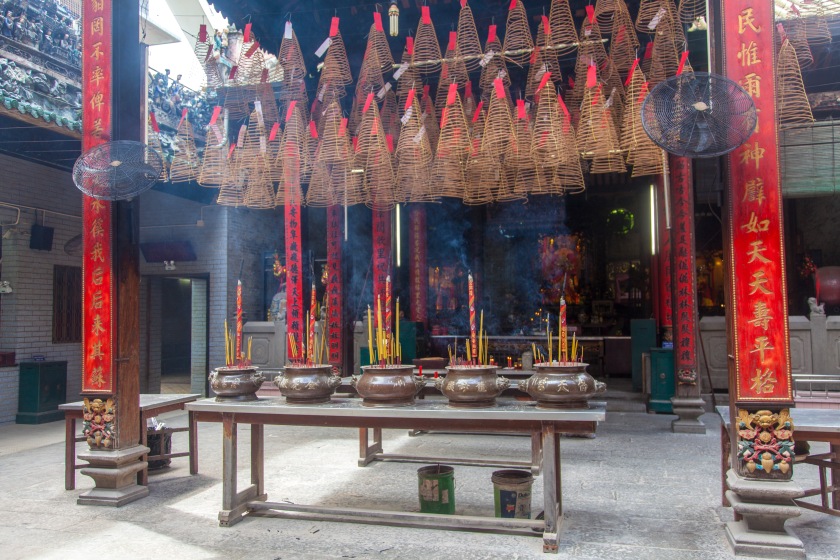
And finally, we visited a lacquer factory. Initially, the technique, like much else, as we have already found out, was brought by the French, but then local craftsmen mastered the skill so much that they pretty much took it to the next level. This work is manual, and very laborious and complex. First, a black wooden board is prepared – which of course should be absolutely smooth – then a picture is drawn on it, then either a part is cut out of mother-of-pearl along the outline of the pattern and stuck to the board, or the contour of the picture is filled with pieces of egg shell (which can even be completely crushed) or paint, and then the painting is covered with fifteen layers of lacquer made of lacquer tree sap, and each layer must fully dry before the next one can be applied. Unfortunately, taking pictures at the factory wasn’t allowed, otherwise it would be very interesting to capture the process of creating lacquerware.
This was the end of the Saigon part of our tour, and we said goodbye to Phuoc. It was about 4 o’clock in the afternoon, and we decided to find an electronics store to buy additional memory cards for our cameras. I must say, the walk was rather stupid: the store which Phuoc had noted for us on the city map didn’t have the card I needed, and the sellers gave us the address of another store, which we spent ages looking for and as a result found out that it was quite close to our hotel. Had we known that in advance, we wouldn’t even have had to drag ourselves that far in this humid heat. We were quite lucky today that there was no rain at all, but the flip side of that is this sticky heat, as the rain would have refreshed the air.
We continued walking until we reached the Barbecue Garden restaurant, which we chose for today’s dinner. The restaurant is open-air, mostly attended by foreigners, and has a very interesting concept: the barbecue ingredients are served raw, which you then have to grill yourself over the gas burner located right in the centre of your table. Once again we really liked everything and the prices were shockingly low: only 32 dollars for two for snacks, barbecue, side dishes, fruit juice, beer and dessert!


And after dinner we decided to finally walk up to the river, taking advantage of the dry weather. We reached the river and walked along the embankment, but couldn’t locate that beautiful skyline with illuminated buildings which we’d seen on some postcard. We slightly got used to the traffic, but it still feels stressful for me – I guess, after this in Baku I’ll be able to cross roads with my eyes closed. At some point, we wanted to cross a wide avenue along the embankment, and spent at least five minutes in front of the zebra crossing, because we couldn’t bring ourselves to step into this uninterrupted stream of traffic, before some local girl – thanks to her! – rushed to our help and literally took us across the road, like old grannies!







